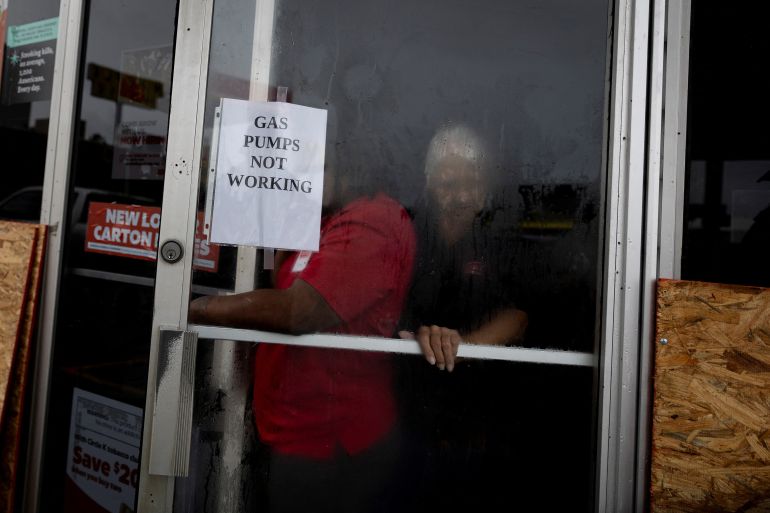‘Prepare to hunker down’: Hurricane Francine strengthens before US landfall
Francine is set to become a Category 2 hurricane, with warnings of ‘life-threatening’ conditions as it nears the US state of Louisiana.
A sign warns of closures at the convenience store of a service station as Hurricane Francine intensifies before its expected landfall in Morgan City, Louisiana, the United States [Marco Bello/Reuters]Published On 11 Sep 202411 Sep 2024
Hurricane Francine is set to become a Category 2 storm before making landfall in Louisiana, the United States National Weather Service has warned, with “life-threatening” storm surge, inland flooding from heavy rainfall and dangerous wind gusts expected.
The warning on Wednesday came as parishes across the southern US state issued evacuation orders. Over a quarter of oil and gas production was also shut down in the Gulf of Mexico, with the Coast Guard shuttering operations at Port Fourchon, a key energy hub, as the storm approached.
Late Tuesday, US President Joe Biden declared a federal state of emergency, opening up expedited aid and rescue funding. That came a day after Louisiana’s Governor Jeff Landry also issued the same declaration on the state level.
The National Weather Service, meanwhile, urged residents to “make sure you have all preparations rushed to completion” as soon as possible.
“Then, prepare to hunker down and shelter in place through the overnight hours,” it said in a post on X.
As of early Wednesday, Francine had 144 km/h (90mph) winds as it travelled northeast towards Morgan City, Louisiana. It was about 394km (245 miles) away as it passed parallel to Texas’s coast.
The storm was expected to have maximum sustained winds of 160km/h (100mph), making it a Category 2 hurricane on the Saffir-Simpson wind scale, which uses a rising 1-5 rating based on a hurricane’s sustained wind speed. It was also expected to produce rainfall of 10-20cm (4-8 inches), according to the National Weather Service.
Some coastal areas were expected to experience up to 2.7m (9 feet) of storm surge, with flash flooding risks extending to Mississippi, Alabama and the Florida Panhandle.
At least 10 parishes in Louisiana had evacuation orders as of Wednesday, with a map released by the Department of Transportation calling for evacuations along the state’s coastal region, which is particularly vulnerable as it is not protected by any levee system.
The city of New Orleans was also distributing sandbags at five sites.
Wayne Grant, a 33-year-old who moved to New Orleans last year, told the Associated Press that he was nervous about the low-lying rental apartment he shares with his partner. It had flooded during a previous storm.
Residents fill up sandbags to protect their homes in anticipation of Tropical Storm Francine, on Tuesday, September 10, 2024, at a distribution site in a parking lot in New Orleans [AP Photo/Jack Brook]
“It was like a kick in the face. We’ve been trying to stay up on the weather ever since,” Grant said as he picked up sandbags. “We’re super invested in the place, even though it’s not ours.”
Louisiana is regularly battered by extreme storms that strengthen as they pass over the warm waters of the Gulf of Mexico, which serves as fuel for their destructive energy. Hurricane Katrina in 2005 proved particularly devastating, killing nearly 1,400 people and causing an estimated $200bn in damages.
However, the 2024 Atlantic Hurricane season – which spans from June 1 to November 30 – has so far proven surprisingly subdued, with only six named storms.
